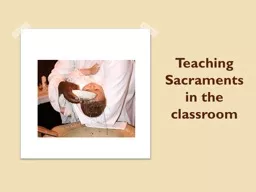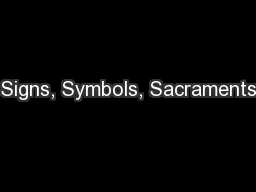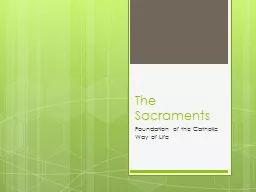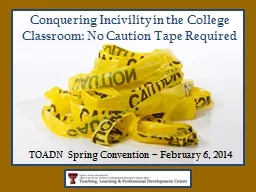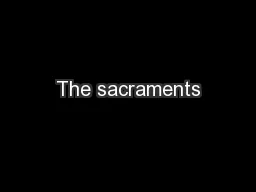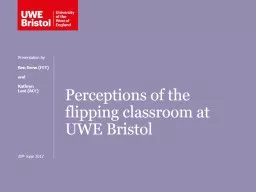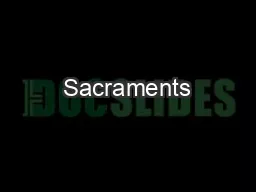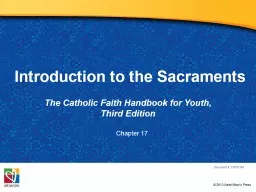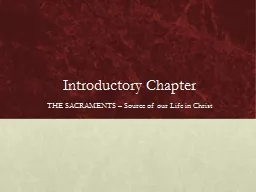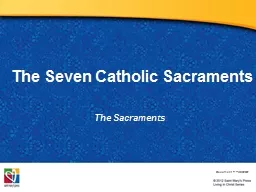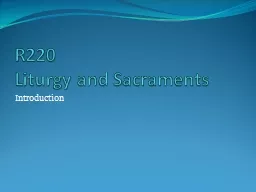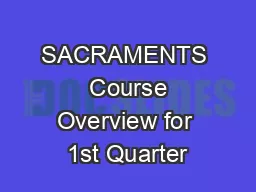PPT-Teaching Sacraments in the classroom
Author : calandra-battersby | Published Date : 2018-10-25
What is a Sacrament The Latin word sacramentum means a sign of the sacred Visible signs and actions of the Church that make visible Gods presence Doors to the
Presentation Embed Code
Download Presentation
Download Presentation The PPT/PDF document "Teaching Sacraments in the classroom" is the property of its rightful owner. Permission is granted to download and print the materials on this website for personal, non-commercial use only, and to display it on your personal computer provided you do not modify the materials and that you retain all copyright notices contained in the materials. By downloading content from our website, you accept the terms of this agreement.
Teaching Sacraments in the classroom: Transcript
Download Rules Of Document
"Teaching Sacraments in the classroom"The content belongs to its owner. You may download and print it for personal use, without modification, and keep all copyright notices. By downloading, you agree to these terms.
Related Documents

